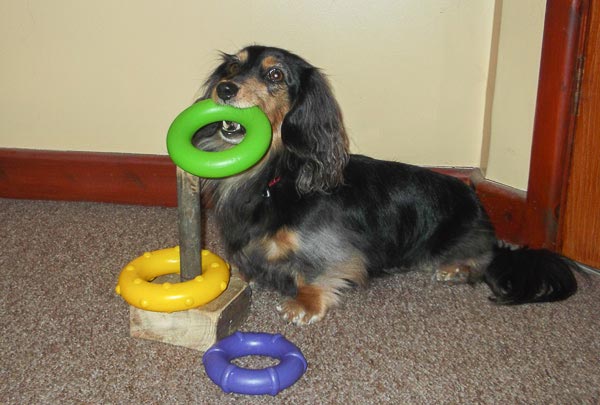Welcoming a new puppy into your home is a joyous occasion, marked by boundless energy, playful antics, and the promise of a loyal companion. Amidst the excitement, it’s easy to overlook one of the most crucial aspects of responsible dog ownership: basic obedience training. In this article, we’ll delve into the importance of instilling good behavior habits in your puppy from the very beginning, emphasizing the significance of early obedience training.
As a responsible pet owner, you play a pivotal role in shaping your puppy’s behavior and ensuring they grow into a well-mannered adult dog. Obedience training during the formative stages of a puppy’s life is not just about following commands; it’s about laying the groundwork for a harmonious relationship between you and your furry friend. Let’s explore why early obedience training is a key investment in your puppy’s future.

Benefits of Early Obedience Training
The benefits of early obedience training extend far beyond having a dog that simply follows commands. It is about establishing a strong foundation that will influence your puppy’s behavior throughout their life. By introducing basic commands early on, you set the stage for a positive and cooperative relationship. Whether you choose to train your puppy yourself, or choose dog training, like Blackheart K9, who offers dog training in Georgia, dog training is important for the life of your puppy.
First and foremost, early training helps prevent undesirable behaviors before they become ingrained habits. Puppies are like sponges, absorbing information and experiences rapidly. By teaching them basic commands such as sit, stay, and come, you not only address immediate concerns but also lay the groundwork for preventing common behavioral issues.
Additionally, early obedience training fosters positive habits, creating a well-behaved companion that is a joy to be around. Imagine the satisfaction of walking your dog without constant pulling on the leash or having them calmly sit when guests arrive. These behaviors, instilled through early training, contribute to a positive and enjoyable coexistence between you and your pup.
Building a positive relationship is another crucial aspect of early obedience training. The process involves not only teaching commands but also establishing trust and clear communication. As your puppy learns to understand and respond to your cues, a bond forms based on mutual respect. This bond becomes the cornerstone of a lifelong connection, enhancing the overall quality of life for both you and your canine companion.
Key Obedience Commands for Puppies
In the realm of puppy training, certain commands stand out as essential for fostering good behavior and ensuring the safety of your furry friend. These fundamental commands not only make daily interactions smoother but also provide a basis for more advanced training in the future.
Sit, Stay, and Come: The Fundamental Trio
Sit: Teaching your puppy to sit is the cornerstone of obedience training. This simple command is versatile and forms the basis for other commands. It helps in managing your puppy’s behavior in various situations, from greeting guests to crossing the street.
Stay: The “stay” command is invaluable for keeping your puppy safe and well-behaved. Whether you’re opening the door or preventing them from chasing after something, a reliable stay command is a game-changer.
Come: A strong recall is crucial for your puppy’s safety and your peace of mind. The “come” command ensures that your puppy returns to you promptly, especially in situations where immediate response is essential.
Leash Training: Walking in Harmony
Leash training is an integral part of basic obedience and contributes to a pleasant walking experience for both you and your puppy.
Loose Leash Walking: Teach your puppy to walk calmly on a leash without pulling. This not only prevents discomfort for you but also ensures a safer and more enjoyable walk for your furry companion.
Heel Command: Introducing the “heel” command encourages your puppy to walk beside you, reinforcing the concept of walking in a controlled and orderly manner.
Recall Training: Ensuring Safety
A reliable recall is vital, especially when your puppy is off-leash in a controlled environment. Recall training builds trust and allows your puppy the freedom to explore while ensuring they return to you when called.
Positive Reinforcement Techniques
Now that we’ve covered the fundamental commands, let’s shift our focus to the methods that make the learning process enjoyable and effective: positive reinforcement techniques.
Explanation of Positive Reinforcement
Positive reinforcement involves rewarding desired behaviors to encourage their repetition. This method relies on the principle that dogs are more likely to repeat actions that result in positive outcomes. Instead of focusing on punishment for undesirable behavior, positive reinforcement accentuates the positive, creating a conducive environment for learning.
Examples of Rewards
Treats: Small, tasty treats are a popular choice for positive reinforcement. Choose treats that your puppy finds especially appealing and reserve them for training sessions. The novelty and taste serve as motivation for your puppy.
Verbal Praise: Dogs thrive on the approval of their owners. A simple, enthusiastic “good boy” or “good girl” accompanied by pets and affection reinforces the connection between the command and positive behavior.
Playtime: For many puppies, play is the ultimate reward. Incorporating play into training sessions not only reinforces positive behavior but also makes the learning process engaging and fun.
Consistency in Reinforcement
Consistency is key to successful positive reinforcement. Ensure that you reward your puppy immediately after they exhibit the desired behavior. This immediacy helps your puppy associate the reward with the specific action, strengthening the connection between the command and the positive outcome.
Embarking on the journey of early obedience training for your puppy is not just an investment in a well-behaved companion; it’s a commitment to building a lasting and positive relationship. As we’ve explored the benefits of instilling good behavior habits from the beginning, mastering key obedience commands, employing positive reinforcement techniques, and overcoming challenges, it’s evident that the rewards extend far beyond the training sessions.
The joy of a puppy sitting on command, walking calmly on a leash, and returning promptly when called is a testament to the success of your efforts. Beyond the practical aspects of obedience, the training process itself becomes a bonding experience, fostering trust, understanding, and communication between you and your furry friend.
Remember, the journey of training is ongoing, and each small achievement contributes to the overall development of your puppy. Celebrate the milestones, no matter how small, and approach challenges with patience and a positive mindset.
As you navigate the exciting path of early obedience training, cherish the moments of connection, playfulness, and growth. The investment you make today will shape the behavior and well-being of your dog for years to come. Enjoy the journey of nurturing a well-mannered and happy canine companion!
 World inside pictures Collect and share the best ideas that make our life easier
World inside pictures Collect and share the best ideas that make our life easier







